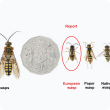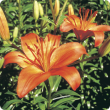Crops
The Department of Primary Industries and Regional Development continues to support the growth and international competitiveness of all crop industries in Western Australia.
With a 2400 kilometre span from its tropical north to its temperate south, WA supports a broad range of cropping industries from rain-fed winter cereals through to irrigated horticultural crops.
In the 2012/13 year the WA cropping industries exported a total of $3.9 billion which comprised: $3.1 billion of cereals, $859 million of pulses, pastures and oilseeds, $142 million of horticultural crops. The major contributors to these exports were wheat ($2.7 billion), canola ($756 million), barley ($377 million), lupins ($42 million), carrots at $48 million, oats ($12 million), and strawberries at $5.5 million.
Articles
Filter by search
Filter by topic
- Horticulture (10) Apply Horticulture filter
- (-) Remove Nursery & cutflowers filter Nursery & cutflowers
- (-) Remove Production & postharvest filter Production & postharvest
- Postharvest (5) Apply Postharvest filter
- Plant nutrition (3) Apply Plant nutrition filter
- Pastures (2) Apply Pastures filter
- Vegetables (2) Apply Vegetables filter
- Pests (1) Apply Pests filter
- Irrigation (1) Apply Irrigation filter
- Pasture management (1) Apply Pasture management filter
- Weeds (1) Apply Weeds filter
- Irrigated crops (1) Apply Irrigated crops filter
- Water management (1) Apply Water management filter
- Water (1) Apply Water filter
- Pests, weeds & diseases (1) Apply Pests, weeds & diseases filter
- Fertiliser (1) Apply Fertiliser filter
- Biosecurity & quarantine (1) Apply Biosecurity & quarantine filter
- Biosecurity (1) Apply Biosecurity filter
- Climate, land & water (1) Apply Climate, land & water filter
- Diseases (1) Apply Diseases filter
- Grains (1) Apply Grains filter
- Fruit (1) Apply Fruit filter
- Grapes & wine (1) Apply Grapes & wine filter











